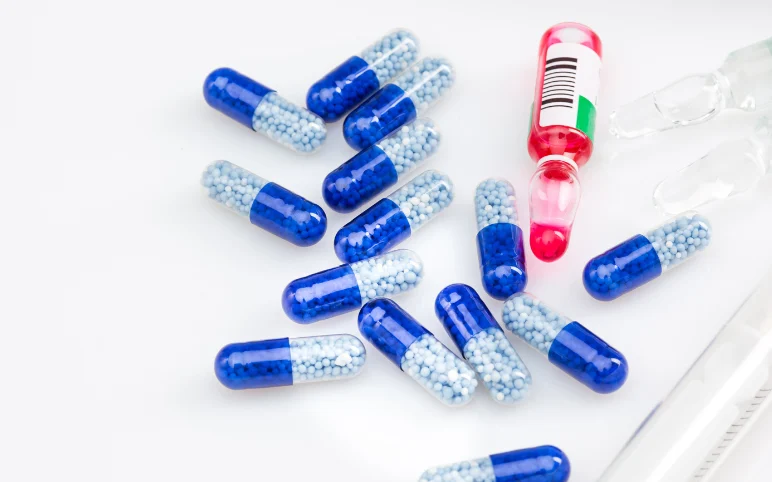Amgen to acquire Rodeo Therapeutics for USD 55 Million Upfront
Amgen Inc. and Rodeo Therapeutics Corporation announced a deal under which Amgen will take over Rodeo, a privately-held biopharmaceutical company based in Seattle, which develops small-molecule therapies to enhance regeneration and repair of several tissues. Rodeo’s 15-PGDH program is a robust strategic fit with Amgen’s inflammation portfolio and efforts to develop first-in-class therapeutics for patients.
Under terms of the deal, Amgen will acquire all outstanding shares of Rodeo in exchange for a USD 55 million upfront payment and future contingent milestone payments potentially worth up to an additional USD 666 million in cash. The transaction has been sanctioned by the shareholders and the Board of Directors of Rodeo.
Rodeo is zeroed in developing first-in-class, orally available modulators of prostaglandin biology that play a vital role in tissue regeneration and repair. Rodeo’s lead 15-prostaglandin dehydrogenase (15-PGDH) modulators have generated compelling data in extensive preclinical studies and have clinical potential in several indications.
Novartis expands radioligand portfolio with iTheranostics deal
Novartis is bolstering a group of radioligand therapies to its pipeline, just one week after its radioligand treatment for prostate cancer fended off cancer progression and benefitted patients live longer in a phase 3 study.
The Swiss pharma is permitting the rights to create and commercialise treatments based on a library of radioligand compounds from iTheranostics, a Sofie Biosciences subsidiary. Formerly developed at the University of Heidelberg, these compounds target fibroblast activation protein or FAP, a cell surface protein located in low levels in healthy tissue but detected in high levels in common cancers.
Susanne Schaffert, PhD, president of Novartis Oncology, said in a statement that FAP is an exciting target, and these agents are a great fit with the radioligand therapy pipeline, which they are actively investigating across multiple tumour types.
The deal with Sofie comprises the rights to develop the radioligand assets for imaging and therapeutic use.
Radioligand therapy combines a targeting compound, or ligand, with a radioactive isotope that inhibits tumour growth by damaging DNA. These targeted medicines bind to markers or proteins expressed in high levels in certain tumors or tumour-associated tissue, such as stroma.
Novartis acquired Advanced Accelerator Applications and its radiopharmaceuticals for USD 3.9 billion in 2017. At the time, the latter’s marketed products were radioactive tracers utilised in diagnostic scans. Still, it was developing Lutathera, a treatment for neuroendocrine tumors based on the rare earth metal leutetium. The drug secured FDA approval in early 2018.
Merck’s Organon acquires Alydia Health for USD 240 Million
Merck announced its entry into an agreement for its spinoff Organon to buy Alydia Health for up to USD 240 million.
Alydia Health develops treatments focusing on preventing maternal morbidity and mortality caused by postpartum haemorrhage (PPH) or abnormal postpartum uterine bleeding. The company produces the Jada system for maintaining and treating abnormal postpartum uterine bleeding or haemorrhage when conservative management is warranted.
The deal is scheduled to close after Organon has successfully spun off from Merck as a standalone, publicly-traded company, a move anticipated to be completed late in the second quarter of 2021.
Organon’s agreement to take over Alydia Health includes up to USD 240 million total consideration, with USD 215 million being spent upfront, plus a USD 25 million contingent milestone payment. Of the upfront payment, USD 50 million will be paid before Organon’s spinoff, with the remaining USD 165 million to be disbursed upon the acquisition’s close.
Forma Therapeutics announces positive FT-4202 in competitive sickle cell space
Forma Therapeutics has displayed blinded data on sickle cell disease patients who received 600 mg of FT-4202. The high-dose cohort featured fewer haemoglobin responders than the 300-mg arm, but the safety profile proffers encouragement for the ongoing phase 2/3 registrational trial.
Late last year, Forma set itself as a viable rival to Agios Pharmaceuticals and Global Blood Therapeutics in the sickle cell space by showing data on recipients of the 300-mg dose of FT-4202. Like Agios’ mitapivat, FT-4202 is a pyruvate kinase R activator. Six of the seven patients who were given the 300-mg amount of FT-4202 had haemoglobin increases of 1.0 g/dl or more significant from baseline.
The response rate compared favourably to results from Agios and Global Blood. However, the small size of the 300-mg cohort left unanswered whether the data gave a true reflection of the efficacy of FT-4202. Now, Forma has carried out the data on seven patients who received the 600-mg dose.
Four of the seven patients had haemoglobin increases of 1.0 g/dl or more significant from baseline. The higher dose did worse numerically on other endpoints, lowering LDH in four patients instead of the six positively affected by the lower amount. The median change in LDH and reticulocytes, respectively hematologic and hemolytic biomarkers, was also numerically lower at 600 mg.
However, the haemoglobin response rate across the combined, 14-patient data set still holds up against the results got by other companies, and Forma observes the opportunities to enhance outcomes. All the subjects in the phase 1 trial administered FT-4202 once a day for 14 days. Based on the trajectory at the end of the treatment period, Forma informed dosing patients beyond 14 days could confer benefits.
Forma will examine that hypothesis in an open-label extension that dosing patients for 12 weeks. The open-label extension is giving a 400-mg dose. Forma is also utilising a 400-mg amount and a 200-mg dose in its phase 2/3 clinical trial. The primary endpoints of phase 2/3 are haemoglobin response at Week 24 and vaso-occlusive crisis rate across the 52-week blinded treatment period.



